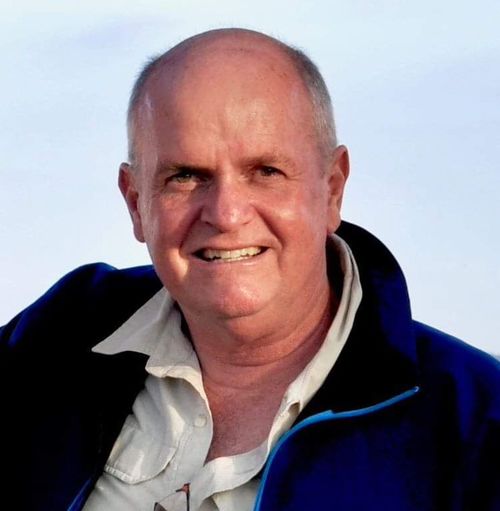President Ronald Reagan issued a proclamation designating February as National Black History Month in 1986 — the same year the birthday of the famed civil rights leader, Dr. Martin Luther King, Jr., was celebrated for the first time as a national holiday.
RV enthusiasts with an interest in Black history will find it worthwhile to consult CivilRightsTrail.com to identify churches, courthouses, schools, museums, and other landmarks across 15 states that played pivotal roles in advancing social justice in the United States during the 1950s and 1960s. CivilRightsTrail.com sorts these historical sites by state and by city, while also providing descriptions and links to each point of interest. Once you determine which historical site you would like to visit, simply visit Go RVing’s campground search tool to identify the campgrounds that could serve as base camps for your Black history tours.
Campgrounds
Campgrounds and RV parks that can be used as base camps for visiting historical sites in Memphis can be found using Go RVing’s campground search tool. These campgrounds include:
(Photo courtesy of Julian Harper)
Historical Significance of Memphis
Memphis is not only the site of critically important landmarks in American civil rights history, but significant historical sites involving Black musical, business, and cultural heritage dating back to the time of the Civil War. (Visit the Tennessee section of CivilRightsTrail.com to learn more.)
These noteworthy landmarks include:
- The National Civil Rights Museum at the Lorraine Motel: Established in 1991, the National Civil Rights Museum is located at the former Lorraine Motel, where civil rights leader Dr. Martin Luther King Jr. was assassinated on April 4, 1968. The museum features interactive exhibits, historic collections, dynamic speakers, and special events throughout the year, offering visitors a chance to walk through history and learn more about one of the most tumultuous periods in American history. The museum is a founding member of the International Coalition of Sites of Conscience, which brings together historic sites, museums, and memory initiatives from all around the world that connect past struggles to today’s movements for human rights and social justice.
- The Beale Street Historic District: Beale Street became a thriving area for Black commerce and culture around the time of the Civil War. Beale Street later became home to many Black-owned businesses, clubs, restaurants, and shops and was the headquarters of Ida B. Wells' anti-segregationist newspaper, Free Speech. The newspaper office was housed in the historic First Baptist Church (Beale Street), which was built by a congregation of formerly enslaved people. According to CivilRightsTrail.com, Beale Street served as the inspiration behind many blues hits during the first half of the 20th century, including W.C. Handy’s “Beale Street Blues.”
(Photo courtesy of The Traveling Child)
“From the 1920s to 1940s, artists such as Muddy Waters, Louis Armstrong and B.B. King played on the street and subsequently developed the legendary Memphis blues sound,” CivilRightsTrail.com writes, adding, “During the Civil Rights Movement, the area was also where African Americans came to entertain and be entertained, shop, strategize and protest. When city sanitation workers decided to strike in response to deplorable job conditions, they marched down Beale Street, and Dr. Martin Luther King Jr. came to Memphis in support. The demonstrations were a precursor to his assassination on April 4, 1968.”
While the Beale Street Historic District includes numerous entertainment venues, such as B.B. King's Blues Club and Restaurant, Rum Boogie Cafe and the Orpheum Theatre, the district also includes museums that highlight important aspects of Black history, such as the Stax Museum of African American Soul Music and The Withers Collection Museum & Gallery. The Stax Museum tells the story of Stax Records and the role of American soul music in the Civil Rights Movement. The Withers Collection Museum houses the archives of Dr. Ernest C. Withers, an African American photojournalist who documented more than 60 years of African American history, including the Civil Rights Movement. Withers also photographed music legends such as B.B. King, James Brown, Aretha Franklin, Isaac Hays and Tina Turner as well as famed sports heroes, including Jackie Robinson, Ernie Banks, and Willie Mays.
- Memphis Cotton Exchange: This museum tells the story of cotton as well as its impact on Memphis and on the South’s economy and culture.
- Slave Haven Underground Railroad Museum: This museum is housed inside the Burkle Estate, which was built in 1849 by Jacob Burkle, a livestock trader and bakery owner who opened his home to help slaves escape to freedom. The house contains a secret cellar and trap doors that were used by runaway slaves. “This dark cellar was their home for days as they sat silently waiting for boats that would take them to other way stations upriver on their way to freedom in the northern states,” MemphisTravel.com states in its description of the museum.
More ideas on historic attractions in Memphis are available on CivilRightsTrail.com and MemphisTravel.com.















